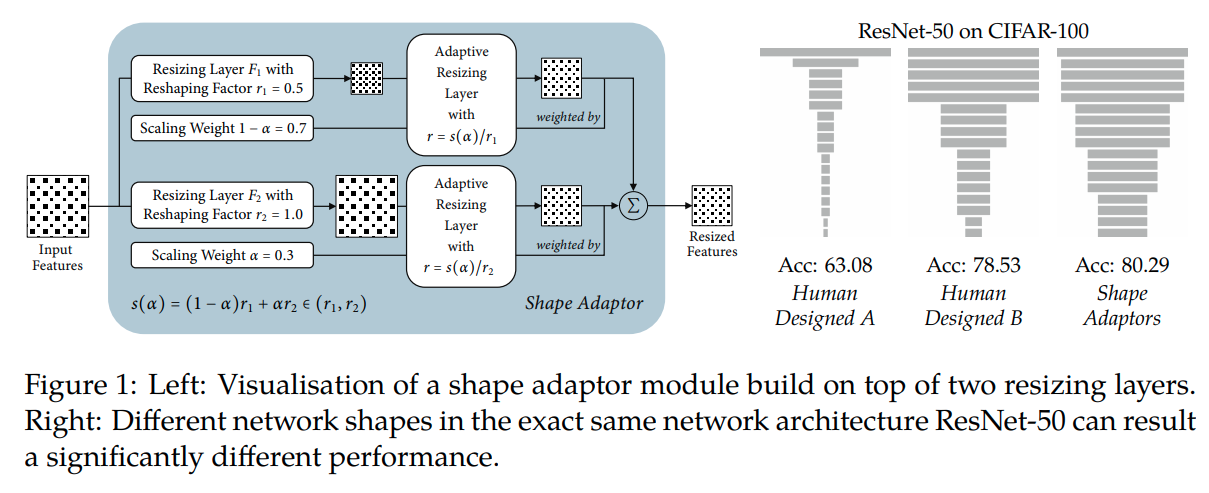def ShapeAdaptor(input1, input2, alpha, residual=False, r1=0.5, r2=1.0):
# sigmoid_alpha = sigmoid(alpha) if having penalty, i.e. penalty = 1;
# the penalty value will be defined/computed in the model_training file
sigmoid_alpha = torch.sigmoid(alpha) * ShapeAdaptor.penalty + r1 / (r2 - r1) * (ShapeAdaptor.penalty - 1)
s_alpha = (r2 - r1) * sigmoid_alpha.item() + r1
# total no. of shape adaptors
ShapeAdaptor.counter += 1
# the true current dim without any penalty (will be used for computing the correct penalty value)
ShapeAdaptor.current_dim_true *= ((r2 - r1) * torch.sigmoid(alpha).item() + r1)
if ShapeAdaptor.type == 'local':
# a shape adaptor will drop at least 1 dimension (local structure), used in standard or AutoTL mode
ShapeAdaptor.current_dim = int(ShapeAdaptor.current_dim * s_alpha)
dim = 1 if ShapeAdaptor.current_dim < 1 else ShapeAdaptor.current_dim # output dim should be at least 1
elif ShapeAdaptor.type == 'global':
# a shape adaptor could maintain the same dimension (global structure), used in AutoSC mode
ShapeAdaptor.current_dim = ShapeAdaptor.current_dim * s_alpha
dim = 1 if ShapeAdaptor.current_dim < 1 else round(ShapeAdaptor.current_dim) # output dim should be at least 1
'''
input1 = resizing(x, scale=r1); input2 = resizing(x, scale=r2)
It's important to debug/confirm your model design using these two different implementations.
Implementation A:
input2_rs = F.interpolate(input2, scale_factor=(1/r2)*s_alpha, mode='bilinear', align_corners=True)
input1_rs = F.interpolate(input1, size=input2_rs.shape[-2:], mode='bilinear', align_corners=True)
Implementation B:
input1_rs = F.interpolate(input1, scale_factor=(1/r1)*s_alpha, mode='bilinear', align_corners=True)
input2_rs = F.interpolate(input2, size=input1_rs.shape[-2:], mode='bilinear', align_corners=True)
Those two implementations (along with an additional version below) should produce the same shape.
Note: +- 1 dim change in intermediate layers is expected due to different rounding methods.
'''
input1_rs = F.interpolate(input1, size=dim, mode='bilinear', align_corners=True)
input2_rs = F.interpolate(input2, size=dim, mode='bilinear', align_corners=True)
if residual: # to keep gradient magnitude consistent with standard residuals: f(x) + x
return 2 * (1 - sigmoid_alpha) * input1_rs + 2 * sigmoid_alpha * input2_rs
else:
return (1 - sigmoid_alpha) * input1_rs + sigmoid_alpha * input2_rs

